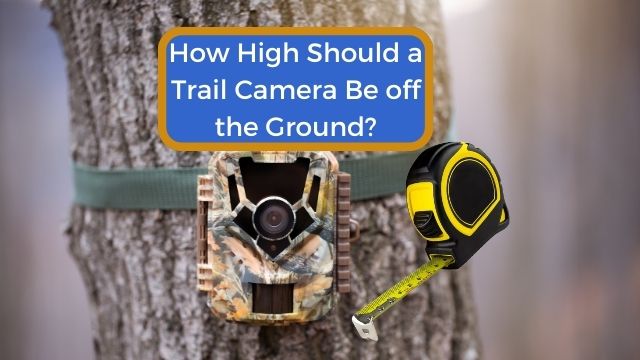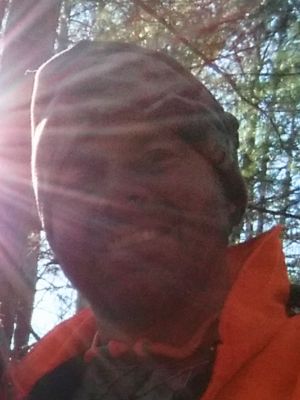
Setting up a trail camera can be an exciting moment for any hunter or outdoor enthusiast. Positioning the camera just right is key to capturing incredible wildlife photos and videos. One of the most important factors to consider is the height at which you mount your trail cam. Selecting the optimal height will increase your chances of success. This guide will explore the ideal trail camera height for your specific needs and terrain.
Table of Contents
What Is the Optimal Height to Place a Trail Camera?
The optimal height to set a trail camera can vary based on your goals, location, and the types of animals you hope to capture. Generally speaking, most experts recommend placing game cameras between 3-6 feet off the ground. This height range allows the camera sensor to detect motion and take clear, properly framed photos of animals of different sizes.
However, when discussing the best height for placing trail cameras to capture deer, which is what most people are wondering about when asking this question, the consensus among experts, including reputable manufacturers like Moultrie and Browning, is to position the cameras at approximately 3 feet above the ground.
The 3-6 foot sweet spot hits the balance of capturing most wildlife clearly while avoiding excessive false triggers or obstructed views. But you may need to fine-tune height based on your specific situation.
Why Is the Height You Place Your Trail Camera at Important?
The height at which you place your trail camera holds significant importance for two critical reasons. Firstly, it directly influences the motion sensor’s effectiveness in detecting the specific type of animal you want to capture on camera. Trail cameras are equipped with motion sensors designed to detect movement within a certain range and angle, extending directly out in front of the sensor. So for example, if the camera is positioned too high, with the animals passing beneath the area the sensor is monitoring, it will result in fewer captured images or videos of your desired subject. Placing the camera at the right height ensures that the motion sensor is optimally aligned with the anticipated path of the target animal.
Secondly, the height of the trail camera has a direct impact on its ability to frame the entire body of the animal in the photos and videos it records. Placing the camera too low may result in incomplete shots that cut off the animal’s head or upper body, providing limited visual information. Conversely, mounting it too high may lead to images capturing only the lower portion of the animal or its legs, again reducing the overall quality of the footage. By carefully choosing the right height, you ensure that your trail camera captures clear, well-framed images and videos of the wildlife you intend to observe or document, enhancing the quality and usefulness of the data you collect.
Factors to Consider That Can Impact the Height of Trail Camera Placement
Beyond your general purpose, several other factors come into play when fine-tuning the optimal trail camera height:
Type of Game You Are Monitoring
As you look to select the height of your trail camera the main thing you need to think about is your intended goal or purpose and how that will impact the ideal height. Are you hoping to capture photos of large game like deer, elk, and bear? Or small animals like foxes, raccoons, or turkeys? Do you want to observe animal behavior at a food source?
Knowing your main objective with the trail camera can get you very close to your ideal height so you can capture their full bodies.
Here are some examples you can use to select the camera’s initial height.
- Deer – 3 feet
- Turkey – 1 1/2 feet
- Elk – 4 feet
Slope of the Land in Front of the Camera
One important factor that often gets overlooked is the angle of the land in front of the camera. Whether the land is sloping upward or is sloping downward can greatly impact the effectiveness of your trail camera.
Land That is Sloping Upward:
If the area in front of your trail camera slopes upward, if your camera comes with a tripod socket I would generally recommend using an adjustable mounting bracket to angle the camera up so the area it is monitoring is parallel with the slope of the land. A picture of a tripod socket is shown below.
If mounting the camera using a bracket isn’t an option, another option would be to position the camera slightly higher than the average height, unless you expect the animals to pass directly in front of the camera, which in that case you might want to think about moving the camera back a few feet. The most important thing I would do if I am not using a mounting bracket is to make sure that my camera is parallel to where I expect the animals will most frequently be passing through on the incline or hill that is in front of the camera.
By positioning the camera higher, if angling it downward isn’t feasible, you can also increase the chances of capturing images of animals as they move uphill, which can be helpful if you anticipate that the animals will be moving uphill rather than passing across the front of the camera.
Land That is Sloping Downward:
If the ground in front of the camera slopes downward, if it is an option for you, I would again recommend using an adjustable trail camera mount so you can angle the camera downward so the area the trail camera is monitoring remains parallel with the slope of the land.
If you don’t have an adjustable mounting bracket available, or can’t use one with your camera, or in the area you want to place the camera, the next best option would be to set your trail camera slightly lower than the average height for what you are trying to capture images and videos of.
Lowering the height for your trail camera, if angling it downward isn’t an option, will help to ensure that the camera is not aimed too high and potentially missing or only getting partial photos of the upper half of any wildlife that might be passing through the area further downhill from the camera.
However, it is fair to point out that by positioning the camera lower, you can put the camera at a higher risk of experiencing false triggers caused by grass or foliage, which is what we will talk about next.
Pick Height to Reduce False Triggers
False triggers from wind, vegetation movement, sunlight changes, etc. can be the bane of every trail camera user. While you can’t avoid them completely, choosing the right height can help reduce false triggers.
Higher to Avoid Ground Vegetation Movement
Mounting trail cameras at lower heights around 2-3 feet are prone to false triggers from grasses and bushes swaying in wind currents near the ground.
One effective strategy to reduce these sorts of false triggers is to position your trail camera at a slightly higher elevation, typically above the level of ground vegetation. By doing so, you can minimize the chances of motion-triggered events caused by grass, shrubs, or small animals in close proximity to the camera. (Note: This is only an option if what you are trying to get pictures and videos of is tall enough to be captured above the vegetation.)
If you are still struggling with false triggers after raising the height of your trail camera you might need to consider trimming or removing the vegetation that is the source of the false triggers.
Angle Downward or Lower Height to Avoid Overhead Branches
In addition to selecting the desired height for what you are trying to capture images of, you can consider angling the trail camera downward to avoid interference from overhead branches or leaves. This adjustment can prevent wind-induced movements of foliage or the presence of small animals in the trees from triggering the camera unnecessarily.
By carefully selecting the right angle, you can maintain a clear line of sight while minimizing disruptions caused by overhead elements. A downward tilt of as little as 5-10 degrees is often enough to prevent overhead false triggers.
Some newer trail cameras come with adjustable mounts that allow for easy adjustment of the camera angle, but as we discussed earlier, there are many affordable options available from retailers like Amazon. You just need to make sure that your trail camera comes with a built-in tripod socket (most modern trail cameras do).
Private Land vs. Public Land
If you look at different websites or forums you will undoubtedly hear about people whose cameras have been tampered with or stolen causing people to place their cameras at different heights depending on where they are using them.
Private Land
If you have your camera on your private land this is much less of a concern especially if you have no trespassing signs posted. Since there is less risk of tampering, in the case of private land I would select the height of the camera by keeping in mind the type of animal I am monitoring and the other tips/factors we mentioned above.
Public Land
Conversely, If you are placing your trail cameras on public land you might be worried about them being tampered with especially if the area is more frequently used by other people.
One strategy that many people will use on public land, is to mount a trail camera high enough so that people are unlikely to notice it or be tempted to mess with it. You might hear other people saying that six feet or higher is ideal, but if I am worried about my cameras I like to raise them higher than six feet so someone would need a ladder to access them.
Another strategy would be to place the camera at the same height you normally would and use a security box or cable to make trail camera theft more difficult. You can find affordable security box and cable options available on manufacturer websites as well as at online retailers like Amazon.
Final Thoughts
Finding your optimal trail camera mounting height can take some fine-tuning through experimentation. Start in the 3-6 foot range based on your target species. Then observe the results and make small adjustments up or down as needed, paying attention to the terrain and vegetation at your specific location to choose a height that maximizes your subject visibility while minimizing false triggers. Often just a small change can significantly improve your trail camera shots.
With a little patience, you will dial in the sweet spot and be rewarded with fantastic wildlife photos and videos. Just remember that no single height is perfect for every situation. Adapt to the circumstances and subject animal habits to capture incredible trail camera pictures.





